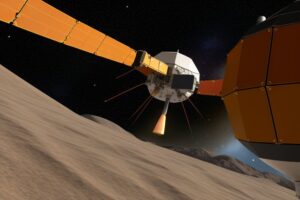As humanity prepares for more ambitious space explorations, including manned missions to Mars and robotic missions to the outer planets, the necessity for a robust communication infrastructure has never been more critical. The Deep Space Network (DSN), managed by NASA, is undergoing significant upgrades to meet these future demands, essentially laying the groundwork for what could become an interplanetary internet.
Overview of the Deep Space Network
The DSN is a worldwide network of U.S. spacecraft communication facilities that supports NASA’s interplanetary spacecraft missions. It also provides radar and radio astronomy observations that improve our understanding of the solar system and the larger universe. The DSN consists of three deep-space communications complexes strategically placed around the world in California, Spain, and Australia, approximately 120 degrees apart in longitude to provide continual communication with spacecraft as our planet rotates.
Key Upgrades to the Deep Space Network
- Increased Bandwidth: The upgrades include enhancing the network’s bandwidth capabilities, which will allow it to handle an increased data flow, enabling high-definition video streaming and faster transmission of scientific data.
- Improved Signal Accuracy: New signal processing technology is being implemented to increase the accuracy and quality of the information received from distant spacecraft.
- Advanced Antenna Technology: The development and installation of new, more sensitive antennas will facilitate clearer and more reliable communication with deep space missions.
The Need for an Interplanetary Internet
As space missions become more complex and widespread, the need for an advanced communication system akin to the internet but designed for the vast distances of space, becomes apparent. Such an “interplanetary internet” would require robust and reliable ways to route information across planets, moons, and spacecraft.
Challenges in Creating an Interplanetary Internet
- Signal Delay and Disruption: One of the main challenges with interplanetary communication is the time it takes for a signal to travel from one point to another. For instance, a signal from Mars can take anywhere from 4 to 24 minutes to reach Earth, depending on the planets’ relative positions in their orbits.
- Interference from Celestial Bodies: Communication signals can be obstructed by planets, moons, or even the sun, leading to potential data loss or delay.
- Scalability and Maintenance: Establishing a network that can be scaled and maintained over vast interplanetary distances poses significant logistical and technical challenges.
Future Prospects and Technologies
The development of an interplanetary internet not only supports future space missions but also lays the foundation for a sustained human presence on other planets. Emerging technologies and concepts play a critical role in this development:
- Delay/Disruption Tolerant Networking (DTN): NASA is experimenting with DTN, which incorporates a protocol that stores data packets until a connection can be made, a crucial adaptation for the inconsistent connectivity in space.
- Quantum Communications: Research into quantum communication suggests it could provide new methods of creating unhackable, highly reliable communication channels across space.
- Autonomous Relay Systems: Deploying autonomous relay satellites that can intelligently route communications depending on their current state and location within the solar system.
Conclusion
The upgrades to the Deep Space Network and the steps toward developing an interplanetary internet represent crucial advancements in space exploration technology. As we venture further into the cosmos, the ability to communicate effectively across space will be as critical as the spacecraft and instruments we send out into the void. These advancements not only promise to enhance our exploratory capabilities but also ensure that the coming era of interplanetary exploration is built on a foundation of robust and reliable interstellar communication.




















+ There are no comments
Add yours